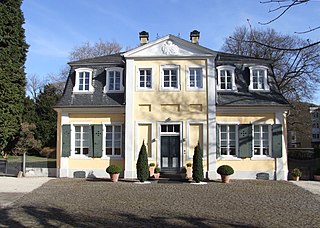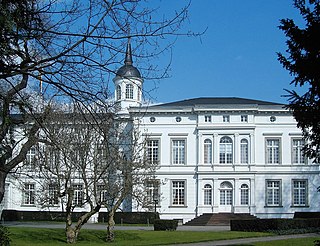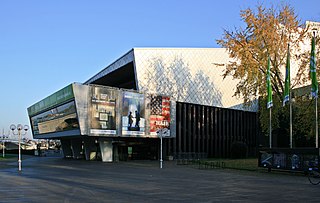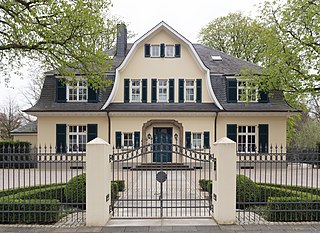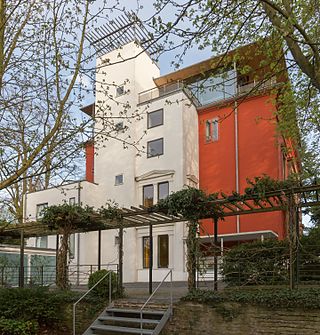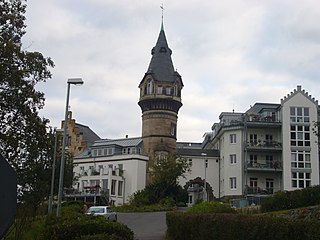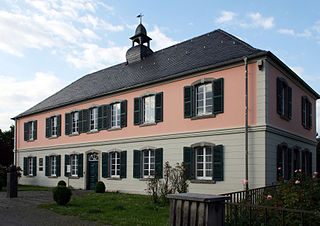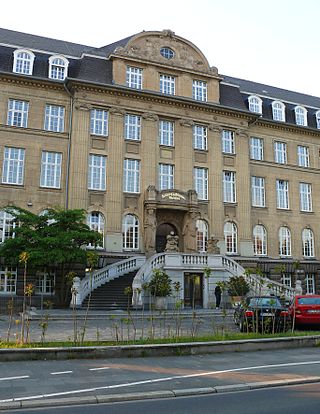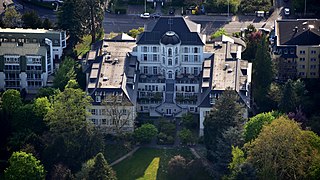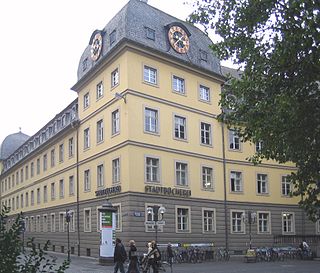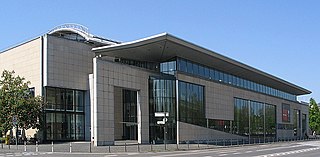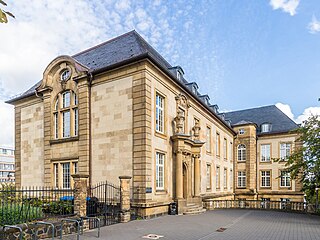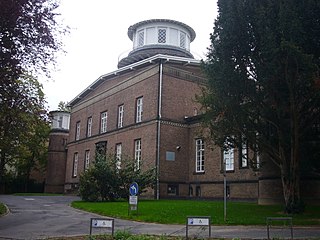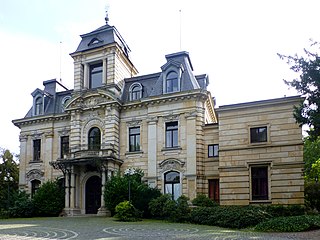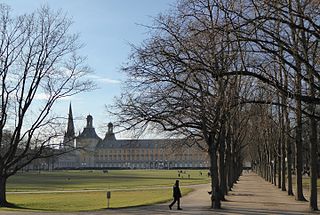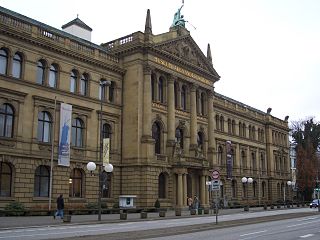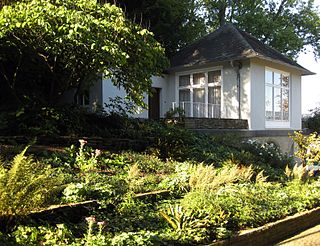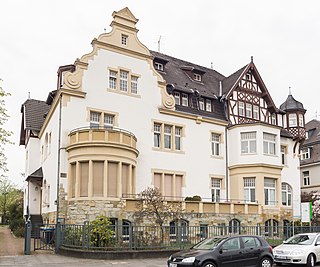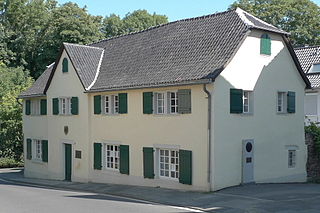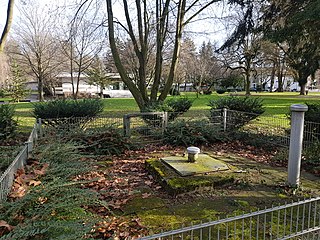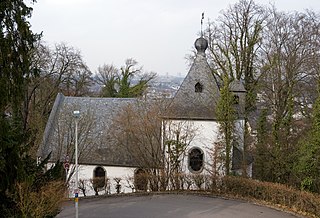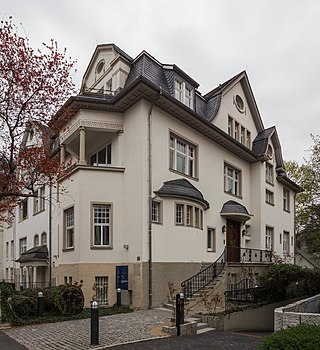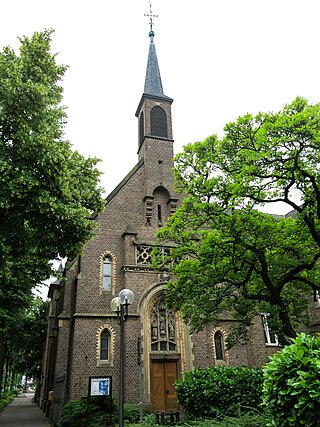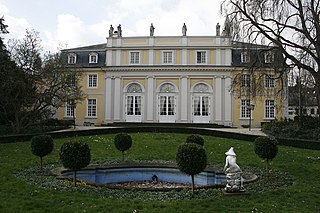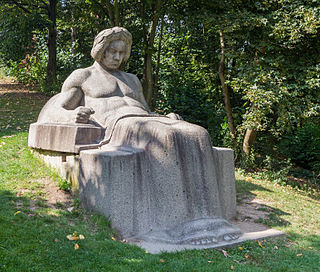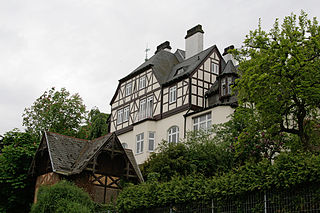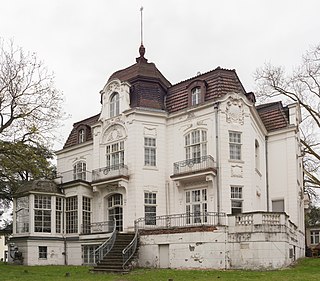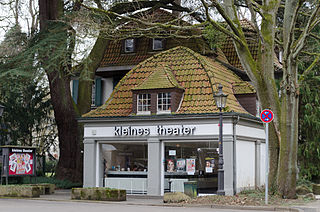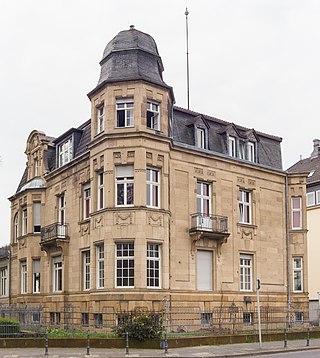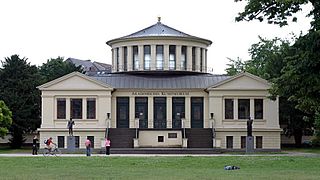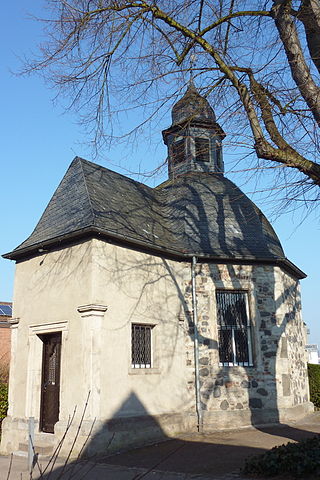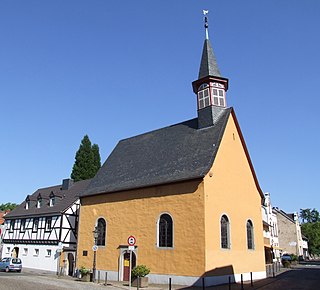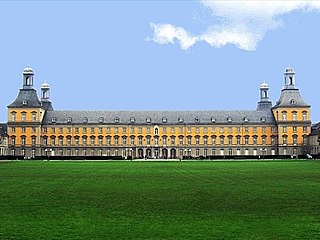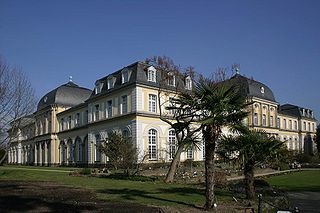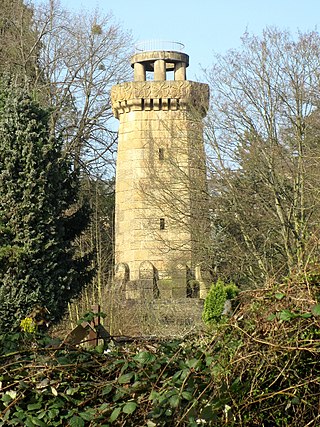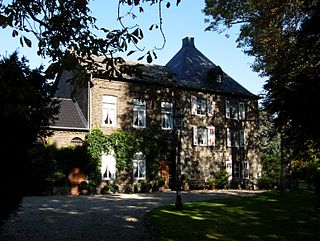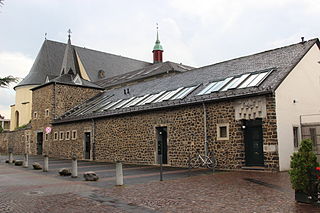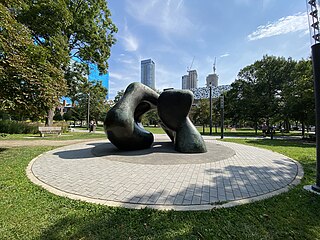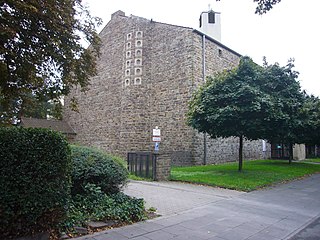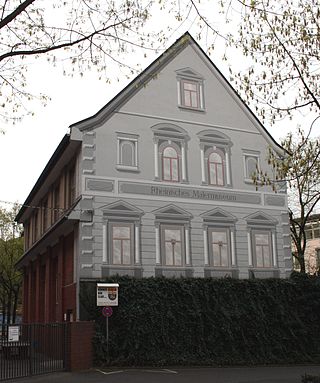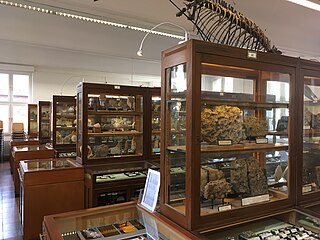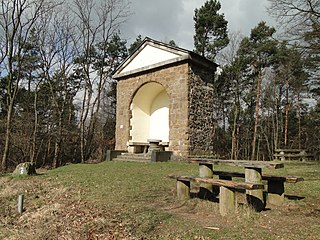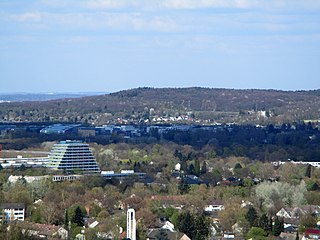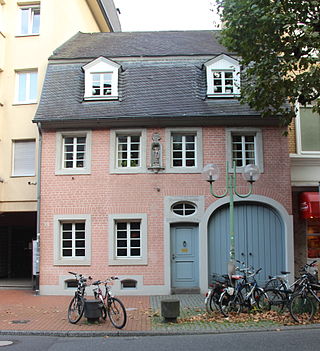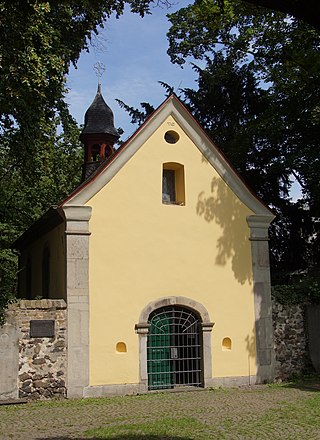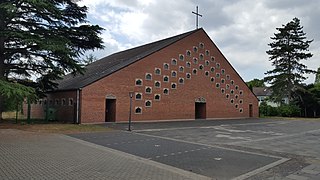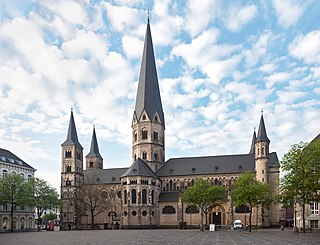100 Sights in Bonn, Germany (with Map and Images)
Legend
Premium Sights
Book tickets, guided tours and activities in Bonn.
Guided Free Walking Tours
Book free guided walking tours in Bonn.
Welcome to your journey through the most beautiful sights in Bonn, Germany! Whether you want to discover the city's historical treasures or experience its modern highlights, you'll find everything your heart desires here. Be inspired by our selection and plan your unforgettable adventure in Bonn. Dive into the diversity of this fascinating city and discover everything it has to offer.
Sightseeing Tours in BonnActivities in BonnThe so-called Bundesbüdchen is an oval kiosk that is listed as an architectural monument and is located in the former government district and today's federal quarter in Bonn. From 1957, the kiosk stood between the then Federal Chancellery, the Bundesrat and the Bundestag. It had to be dismantled in 2006 and was re-erected in May 2020 near its original location on the corner of Heussallee and Platz der Vereinten Nationen.
Langer Eugen is an office tower in the Gronau district of Bonn, Germany. It was built between 1966 and 1969. Since 2006 it has housed several United Nations organizations. Until the German Bundestag (parliament) moved to Berlin in 1999, the building was the primary location for the offices of the members of the Bundestag. After renovations, eleven UN organizations moved into the building and it began serving as the center of the UN Campus, Bonn. Langer Eugen is protected as a landmark or listed building under the North Rhine-Westphalia Monument Protection Law. It is currently the second-tallest building in Bonn and the 43rd tallest building in Germany. When it was built it was briefly the second-tallest building in Germany, behind the Bayer-Hochhaus.
Bonn Minster is a Catholic church in Bonn. It is one of Germany's oldest churches, having been built between the 11th and 13th centuries. At one point the church served as the de facto cathedral for the Archbishopric of Cologne, because it is the major church of what was then the Archbishop-Elector's residence. It is now a minor basilica. It served as the inspiration for the Kaiser Wilhelm Memorial Church in Berlin, as Kaiser Wilhelm II had studied in Bonn.
4. Beethoven House
The Beethoven House in Bonn, Germany, is a memorial site, museum, and cultural institution serving various purposes. Founded in 1889 by the Beethoven-Haus association, it studies the life and work of composer Ludwig van Beethoven.
5. Alter Zoll
The Old Customs in Bonn is a former bastion of Bonn's city fortifications, also known as the Three Kings. It was built around 1644 and is located on the slope of the banks of the Rhine on the private property of the University of Bonn as the owner. It is a listed building.
6. Fundort Oberkasseler Menschen (Doppelgrab)
.jpg)
The double grave of Oberkassel was discovered in 1914 by quarry workers in what is now the Bonn district of Oberkassel. Under flat basalt blocks and enveloped by a sparse layer of clay dyed by red chalk lay the skeletons of a 50-year-old man, a 20 to 25-year-old woman, the remains of a dog, other animal remains and worked animal bones.
7. Ernst-Moritz-Arndt-Gymnasium
The Ernst-Moritz-Arndt-Gymnasium (EMA) is one of the oldest municipal grammar schools in Bonn. It was founded in 1882 under the name Höhere Bürgerschule and renamed in 1938 at the suggestion of the Protestant Church of Bonn after the Western Pomeranian publicist, historian and poet Ernst Moritz Arndt (1769–1860), who had spent the second half of his life in Bonn.
8. Freizeitpark Rheinaue
The Rheinaue amusement park, called "the Rheinaue" by locals, is a 160-hectare local recreation area in Bonn designed as a park. The main features of the park were created on the occasion of the Federal Garden Show in 1979 south of Bonn's Gronau, a then undeveloped and agriculturally used floodplain area.
9. Namen-Jesu-Kirche
The Namen-Jesu-Kirche is a post-Gothic church building in Bonngasse, Bonnstadt. The church is owned by the state of North Rhine-Westphalia and is used by the Old Catholic Church in Germany as a cathedral and city church. It is a listed building.
10. Villa Spiritus
The Villa Spiritus is a villa on the banks of the Rhine in Bonn in the district of Gronau, which was built in 1896/97. It was used by the armed forces of the United Kingdom from 1945 to 2011. The villa is a listed building.
11. Sankt Josef
Beuel-Mitte is a district of the Bonn district of Beuel. It lies between the Rhine in the west, the railway line in the east, the Bröltalbahnweg in the north and the Rosenweg in the south. Created from earlier village settlements, Beuel-Mitte formed the core site through his central bridge position. Because of its central location between downtown Bonn and the higher-priced Rhein-Sieg district, mostly historical building fabric as well as numerous new buildings in the upper price segment along with a wide range of leisure, shopping and cultural infrastructure, the district is considered a "high" residential area.
12. Römerkran
A treadwheel, or treadmill, is a form of engine typically powered by humans. It may resemble a water wheel in appearance, and can be worked either by a human treading paddles set into its circumference (treadmill), or by a human or animal standing inside it (treadwheel). These devices are no longer used for power or punishment, and the term "treadmill" has come to mean an exercise machine for running, walking or other exercises in place.
13. Dietkirche
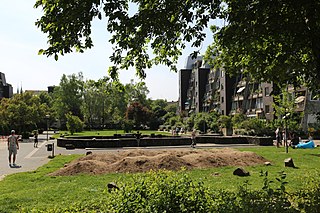
The name Dietkirchen Bonn stands for several terms that had an important role in the history of today's federal city of Bonn and its region. So Dietkirche was not only the name of a first Christian church, but also the names of an early settlement that had formed around the church. Dietkirchen also became the name of the later parish district (Sprengel) and also the name of a monastery founded by the church, from which the St. Petrus Abbey later emerged in Dietkirchen. In addition to the monastic start-ups in Vilich (978) and Schwarzrheindorf (1151), the Dietkirchen monastery was one of the first religious and female conventions in the Bonn area. The Dietkirchen Abbey was lifted under the French administration in 1802 and its possession was confiscated.
14. Altes Wasserwerk
The Old Waterworks is an ensemble of buildings in Bonn, whose pump house housed the plenary hall of the German Bundestag from 1986 to 1992/93. It dates back to the end of the 19th century and used to serve as the city's water supply. Today it contains office and conference rooms. It is located above the banks of the Rhine (Stresemannufer) near the Federal Palace in the district of Gronau with the address Hermann-Ehlers-Straße 29.
15. Palais Fürstenberg
The main post office in Bonn is a former city palace on Münsterplatz, which was built from 1751 to 1753. It was the main post office of the city from 1877 to 2008. The entire complex, including the former parcel post office at Bottlerplatz, built between 1906 and 1908, is a listed building.
16. Der Jahrhundertschritt
The Step of the Century is a bronze sculpture that was created by Wolfgang Mattheuer in 1984. It is considered one of the most important works of art in the GDR at the time of the division of Germany and is a parable of the turmoil of the 20th century.
17. Kreuzbergkirche
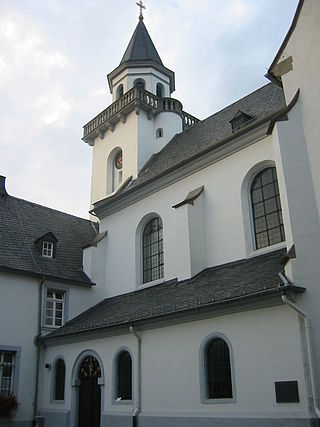
The Kreuzberg Church is a church building in the Bonn district of Endenich, which was built on the summit of the Kreuzberg by order of the Elector and Archbishop of Cologne, Ferdinand of Bavaria, until 1627. The towers of the church are visible from large parts of Bonn and the foothills. It is a listed building as a complete complex, including the Holy Staircase, the monastery building and three Stations of the Cross.
18. Wilhelmbau
The Bonn Regional Court was founded in 1850 and is one of the 19 regional courts in North Rhine-Westphalia. It is responsible for the districts of the six district courts in Bonn and the surrounding area and is located in the district of the Higher Regional Court of Cologne.
19. Stiftskirche
The collegiate church is a Roman Catholic parish church in Bonn, which bears the name St. Johann Baptist und Petrus, locally also called Kuhle Dom, and was built from 1879 to 1886. It is located on Stiftsplatz on Kölnstraße in the district of Bonn-Zentrum and characterizes the Bonn cityscape. The parish of the parish church is the oldest parish in Bonn. From the end of the 19th century, several parishes were successively spun off from their parish area. In 2010, the spin-offs were reversed, since then the parish has borne the name St. Petrus Bonn-Mitte and has around 9000 members. The church building is a listed building.
20. Kreuzkirche
The Kreuzkirche is a Protestant church in Bonn, Germany. Since 1871 it has been the church of the Kreuzkirchengemeinde, which belongs to the Bonn church district of the Evangelical Church in the Rhineland, and also the Protestant city church of Bonn. With a seating capacity of 1200 seats, it is the largest Protestant church in the Rhineland and the largest church in Bonn. The Kreuzkirche is a listed building.
21. Transrapid 06
The Transrapid 06 is a two-part magnetic levitation vehicle of the Transrapid type and was built as the first maglev train of its kind for the Transrapid test facility Emsland (TVE), which was put into operation in June 1983. It is the successor to the Transrapid 05.
22. Pantheon Theater
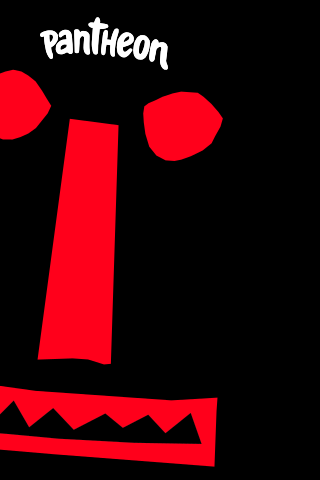
The Pantheon Theater was founded in Bonn in October 1987 by the actor, director and cabaret artist Rainer Pause and is one of the most renowned cabaret in German-speaking countries. It was in the basement of the Bonn Center at Bundeskanzlerplatz by summer 2016. After an investor bought the Bonn Center to tear down the building and use the property for a new building, the Pantheon Theater was terminated the rental agreement in summer 2016. The last season in Pantheon ended in mid-July 2016. On August 30, 2016, the rental agreement for the new venue in the Beuel between the city of Bonn and the Pantheon Theater was signed. He has a term of 30 years to October 31, 2046. The contract was postponed several times by the pantheon after there were discrepancies between the Pantheon operators and the city of Bonn in July 2016. The theater has been located in Bonn-Fuel since the end of October 2016.
23. Sankt Marien
St. Mary's is the Catholic parish church in Bonn's inner Nordstadt. It is located on the corner of Adolfstraße and Oppenhoffstraße, not far from the town hall. The church, including the vicarage, is a listed building.
24. Villa Cappell
The building Heisterbachstraße 39 is a villa in Rüngsdorf, a district of the Bonn district of Bad Godesberg, which was built in 1904/05. It lies above the banks of the Rhine (Von-Sandt-Ufer) at the end of Heisterbachstraße. Until the end of the 1990s, the villa was the residence of the British ambassador to the Federal Republic of Germany and is a listed building.
25. Wasserburg Lede
Lede Castle in the Bonn district of Vilich in North Rhine-Westphalia was originally a Romanesque residential tower, from which a Gothic moated castle developed over time. It is designated as an architectural and archaeological monument.
26. Brückenmännchen
The Bonn Bridge Man is a stone sculpture that was attached to the right tower of the Beuel river pillar, directly above the pedestrian culvert, during the construction of the first Bonn Rhine bridge in 1898 and stretched its buttocks to the Beuel side. The background was that the bridge was financed exclusively by Bonn residents, because the residents of the "schäl Sick" did not want to contribute to the costs.
27. Stiftskirche Sankt Peter (Kloster)
St. Peter's is the Roman Catholic parish church in the Bonn district of Vilich. It was a collegiate church until the dissolution of the originally Benedictine women's monastery and since 1488 the secular monastery of Vilich.
28. Landhaus zur Lippe
The Lippesche Landhaus is a palace in Oberkassel, a district of the Bonn district of Beuel, which was built between 1750 and 1760. It is located on the east side of Königswinterer Straße. The country house, consisting of two houses, is a listed building.
29. Palais Schaumburg
Palais Schaumburg is a neoclassical-style building in Bonn, Germany, which served as the primary official seat of the German Federal Chancellery and the primary official residence of the Chancellor of the Federal Republic of Germany from 1949 until 1976. As the headquarters of the Federal Chancellery, it was simply known as the House of the Federal Chancellor. Since 2001, Palais Schaumburg has served as the secondary official seat of the German Federal Chancellery and the secondary official residence of the Chancellor of the Federal Republic of Germany.
30. Villa Hammerschmidt
Hammerschmidt Villa is a villa in the German city of Bonn that served as the primary official seat and primary official residence of the president of the Federal Republic of Germany from 1950 until 1994. President Richard von Weizsäcker made Bellevue Palace in Berlin his primary official seat and residence in 1994. In German, the Villa is also called the "White House of Bonn", and served as a political symbol of West Germany and its capital Bonn. Since 1994, the Hammerschmidt Villa has been the secondary official seat and secondary official residence of the president of Germany. The president's standard is flown above Hammerschmidt Villa when the president is in Bonn.
31. Opernhaus
The Bonn Opera is the municipal opera house of the federal city of Bonn. It forms one of the three properties of the Theater Bonn, an institution similar to that of the Federal City of Bonn and is also operated by it.
32. Villa Böker
The building at Friedrich-Wilhelm-Straße 14 is a villa in the Bonn district of Gronau, which was built in 1921/22. It is located as a solitaire with an extensive park on the edge of the Johanniterviertel. The villa, including the associated carriage house and garden, is a listed building.
33. Villa Prieger
The Villa Prieger is a villa in the Bonn district of Gronau, which was built from 1864 to 1866. It is located above the banks of the Rhine with the address Raiffeisenstraße 2–4. Today, the villa forms the centre of the Montag Foundations and is a listed building.
34. Rigal'sche Kapelle
The Rigal'sche Kapelle is a Protestant chapel in the centre of Bad Godesberg, a district of Bonn. It is located on the corner of Kurfürstenallee and Friedrich-Ebert-Straße opposite the so-called "Rigal'sche Wiese" immediately north of the former Chinese embassy. It is used by the Protestant St. John's parish in Bad Godesberg, the Protestant francophone parish and the West Regional Convent of the St. John's Brotherhood and, since July 2017, by the "Gebetshaus Bonn" initiative.
35. Rosenburg
The Rosenburg is a castle-like villa in the Bonn district of Kessenich, which was built in 1831. It was the seat of the Federal Ministry of Justice from 1950 to 1973. The Rosenburg is a listed building.
36. Nordfriedhof
The municipal North Cemetery in Bonn is located north of the city center, between the districts of Auerberg and Buschdorf. With a total area of 27 hectares, it is the largest cemetery in the federal city. The cemetery is a listed building.
37. Schumannhaus und Schumann-Grabmal
The Schumannhaus Bonn is the house where the German composer Robert Schumann died in the Bonn district of Endenich. In the 19th century, it housed a private psychiatric hospital. Other prominent personalities were also treated in it, such as the painters Carl Gehrts, Mihály von Munkácsy and Alfred Rethel. Today, the house is a memorial and is used as a museum and music library of the city of Bonn. The Schumann House is a listed building.
38. Mathematics Centre
The building of the Rhineland Chamber of Agriculture in Bonn is a neo-baroque building that was used by the eponymous Chamber of Agriculture from 1915 to 2004. It is located at Endenicher Allee 60 in the Weststadt directly next to the Poppelsdorf sub-campus of the Rheinische Friedrich-Wilhelms-Universität, whose mathematical institutes have used it since 2009. Since 1984, the building has been a listed building.
39. Villa Camphausen
Villa Camphausen is a villa in Mehlem, a district of the Bonn district of Bad Godesberg, which dates back to the second half of the 19th century. It is located on the east side of Mainzer Straße with a park extending to the banks of the Rhine. The villa, together with the park and a Prussian milestone, is listed as an architectural monument.
40. Altes Stadthaus
The Altes Stadthaus is a former administration building in Bonn, Germany, built for the French occupation forces after World War I. It was designed by the Munich architect German Bestelmeyer in 1922. Construction was completed in 1924–25. The building most recently served as a public library and administration building. As of 2012, the Altes Stadthaus is being renovated and extended as a "House of Learning", which will accommodate the community college and the library.
41. Haus der Geschichte der Bundesrepublik Deutschland
Haus der Geschichte is a museum of contemporary history in Bonn, Germany. With around one million visitors every year, it is one of the most popular German museums. The Haus der Geschichte is part of the Haus der Geschichte der Bundesrepublik Deutschland Foundation, alongside the "Zeitgeschichtliches Forum Leipzig", the "Tränenpalast" at Berlin Friedrichstraße station and the "Museum in the Kulturbrauerei". The foundation's headquarters is in Bonn.
Wikipedia: Haus der Geschichte (EN), Twitter, Opening Hours, Facebook, Instagram, Website
42. Historisches Institut
The Oberbergamt Bonn, founded as the Royal Mining Office for the Lower Rhine Provinces, was a Prussian and later North Rhine-Westphalian authority of the mining, metallurgical and saltworks administration. In 1970, it was merged with the Oberbergamt Dortmund to form the Landesoberbergamt Dortmund.
43. Alte Sternwarte
The Old Observatory in Bonn is a historic observatory from the 19th century. It is located in the Südstadt at Poppelsdorfer Allee 47. It was founded by Friedrich Wilhelm August Argelander. Both the main building and a stand-alone telescopic dome on the property ("refractorium") are listed as architectural monuments. In 2018, the Old Observatory was also included in the list of "Outstanding Astronomical Heritage" of the International Astronomical Union.
44. Stella Rheni
The Villa von der Heydt in the Bonn district of Alt-Godesberg is located on the Wacholderhöhe at Elisabethstraße 18. The residence of the von der Heydt family, built at the end of the 19th century as a summer residence, was sold in 1927 to the Jesuit order, which built a private school with boarding school – the Aloisius College – in the spacious park. The villa, including the historic outbuildings and park, has been a listed building since 2006. The Stella Rheni has been used as an event venue since 2016.
45. Hofgarten
The Hofgarten is a park in Bonn, Germany. It belongs partly to the city centre, partly to the southern part of the city and borders in the northwest on the main building of the University of Bonn, the Electoral Palace. In the 18th century, the park was created as a garden for the residence of Elector Clemens August. Nowadays, Bonn's Hofgarten is a popular local recreation area, especially among students, due to its central location.
46. St. Severin-Kirche
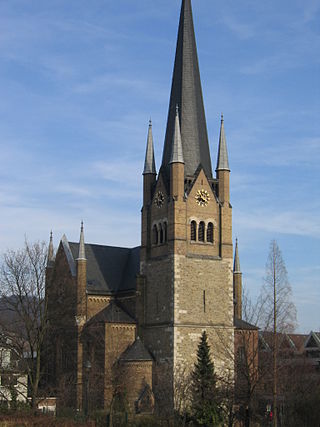
The Catholic parish church of St. Severin is a neo-Romanesque church building in Mehlem, a district of the Bonn district of Bad Godesberg. It is located on the west side of Mainzer Straße. The church is a listed building.
47. Museum Alexander Koenig
The Museum Koenig Bonn, formerly Zoological Research Museum Alexander Koenig, is a natural history museum and zoological research institution in Bonn, Germany. The museum is named after Alexander Koenig, who donated his collection of specimens to the institution. The museum was opened in 1934 and forms, since 2001, the Leibniz Institute for the Analysis of Biodiversity Change, abbreviated LIB, together with the Museum of Nature Hamburg. The LIB is affiliated with the Leibniz Association.
48. Kanzler-Teehaus
The Chancellor's Teahouse is a pavilion in the park of Palais Schaumburg in the Gronau district of Bonn. It was built in 1955 on the banks of the Rhine (Wilhelm-Spiritus-Ufer) and used by the Federal Chancellors of the Federal Republic of Germany for confidential discussions, sometimes also for private purposes. As part of the area of the former Federal Chancellery, the teahouse is listed as an architectural monument.
49. Praxis am Post-Tower
The building Kurt-Schumacher-Straße 4/6 is a semi-detached villa in the Bonn district of Gronau, which was built in 1906/07. It is located in the centre of the Federal Quarter opposite the Schürmann Building. The villa is a listed building.
50. Synagoge Tempelstraße
The synagogue in the Bonn district of Gronau was built in 1958/59. It is located on Tempelstraße on the northern edge of the Federal Quarter, immediately south of the Federal Foreign Office. It is the only synagogue in the city of Bonn and is a listed building.
51. Ehemaliger Deutscher Bundestag
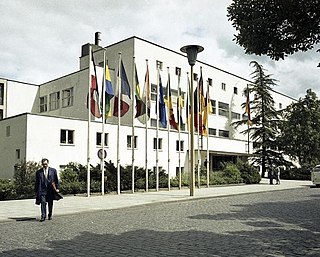
The Bundeshaus is a building complex in Bonn, Germany, which served as the Provisional Parliament House of West Germany, and thus the seat of the German Bundestag and Bundesrat, from 1949 until 1999. The main building, constructed between 1930 and 1933, served as a Pedagogical Academy until the end of the Second World War. After the resolution of the Hauptstadtfrage in 1949 in favor of Bonn, the structure was converted into the provisional seat of the Bundestag and Bundesrat.
52. Haus der Springmaus
With over 65,000 visitors a year, the Haus der Springmaus e.V. in Bonn-Endenich is one of the most famous cabaret theatres in Germany and the parent company of the improvisational theatre Springmaus. It is managed by Berit Baumhoff; 1st chairman is Andreas Etienne.
53. Basis-Bonn 1847
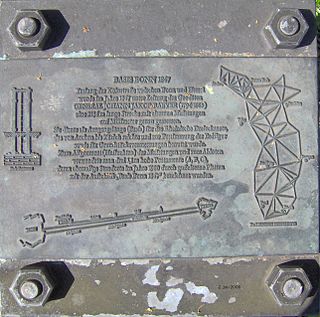
The base Bonn is a 2.1 km long geodetic base line, which the Berlin general staff officer Johann Jakob Baeyer used as the basis for the Rheinische triangular measurement. Their course is marked by three measurement points. At one of these points, in Bonn-Auerberg on Kölnstraße on the Josefshöhe, there is a cast iron table with a memorial inscription in front of the neo-Gothic chapel: Based Bonn 1847 along Kölnstraße between Bonn and Hersel was under the direction of General Johann Jakob Baeyer in 1847 (1794–1885) A 2134 m long route with iron measuring rods measured precisely to millimeters. It served as the output length (base) for the Rhenish triangle network, which ranged from Aachen to Zurich and was used to determine the earth's figure and for property measurements. For the alignement (influencing) of the measuring rods and for the replacement, three 1.1 m high mail was used, the former locations of which were referred to in 1980 by cast iron records with the inscription 'Basic Bonn 1847'.
54. Villa Ingenohl
The Villa Ingenohl is a villa in the Bonn district of Gronau, which was built in 1895/96. It is located above the banks of the Rhine (Wilhelm-Spiritus-Ufer) with the address Raiffeisenstraße 5 in the immediate vicinity of Villa Heckmann. The villa is a listed building.
55. Marterkapelle
The Marterkapelle, also known as Mordkapelle, is a church building built between 1719 and 1721 in the Bonn district of Endenich at the foot of the Kreuzberg, which belonged to a Benedictine monastery from 1888 onwards, together with other buildings. The chapel is located a short distance from the Kreuzberg church and is part of the former monastery as an architectural monument under monument protection. After the dissolution of the Benedictine convent in 2001, the buildings have been used since 2002 as the Redemptoris Mater seminary under the auspices of the Archdiocese of Cologne.
56. St. Nikolaus-Kirche
The parish church of St. Nicholas is a listed church building in the Bonn district of Kessenich. The church is of particular importance because its orientation provides information about the urban development of the village of Kessenich, characterises the townscape and has an unusual architectural form, which has inspired at least one other church, the church of St. Aegidius in Hemmerich, built under Pastor Maaßen. The Catholic parish belongs to the Bonn-Süd parish association.
57. Haus Stroof
The Bürgermeister-Stroof-Haus was the residence and thus the official residence of the first mayor of Vilich, Leonhard Stroof (1757–1825); it was not until 1896 that the official seat was moved to Beuel. It is a listed building because of its Rhenish half-timbering and as an "unusual architectural testimony of the Bonn region".
58. Trinkpavillon Kurfürstenquelle
The Kurfürstenquelle with healing water is located in the city park of the Bonn district of Bad Godesberg. In addition to this healing water spring served in the drinking pavilion there, there is the Draitsch spring in the local fountain avenue, where both healing waters are offered for sale.
59. Michaelkapelle
The Michaelskapelle is a church building in the Bonn district of Bad Godesberg. The building is located about 60 metres northwest of the keep of the Godesburg, which was built from 1210 onwards. It is a listed building.
60. Alter Kirchturm

The Rüngsdorf church tower, a Romanesque choir tower, is the only remnant of the old parish church of St. Andreas in the Bonn district of Rüngsdorf, which belongs to the district of Bad Godesberg. Together with grave crosses from the 17th/18th century and a stone cross, it is listed as an architectural monument.
61. Marc Asbeck Grundbesitz Bonn
The house Heinrich-Brüning-Straße 16 is a villa in the Bonn district of Gronau, which was built in 1909 and now serves as an office building. It forms the right end of the three-part group of villas at Heinrich-Brüning-Straße 16–20, which is located in the centre of the Federal Quarter. The villa is a listed building.
62. Redemptoristenkloster Bonn
The Redemptorist Monastery Josefshöhe is a Redemptorist monastery in the Bonn district of Auerberg. The monastery complex on Kölnstraße with the church of St. Josef an der Höhe is a listed building.
63. Villa Heckmann
The building at Raiffeisenstraße 3 is a villa in the Bonn district of Gronau, which was built in 1896/97. It is located above the banks of the Rhine (Wilhelm-Spiritus-Ufer) in the immediate vicinity of Villa Ingenohl. The villa is a listed building.
64. Redoute
The Redoute in Bad Godesberg, now part of Bonn, North Rhine-Westphalia, Germany, is a hall opened in 1792 for balls of the court of Archduke Maximilian Francis of Austria. When Bonn was the location of the government of the Federal Republic of Germany, from 1949 to 1990, state receptions were held at the Redoute. Today, the listed historical building is used for events.
65. Beethoven-Denkmal
The Beethoven monument in Bonn's Rheinaue commemorates the city's most famous son, the composer Ludwig van Beethoven. It is a seat sculpture by the sculptor Peter Christian Breuer. It is a listed building.
66. Villa Deichmann
The building at Basteistraße 18 is a villa in Rüngsdorf, a district of the Bonn district of Bad Godesberg, which was built from 1900 to 1902. It lies above the banks of the Rhine (Von-Sandt-Ufer) at the end of a cul-de-sac starting from Basteistraße. The villa, as well as the adjoining gardener's house and the neighbouring former Deichmann coach house, are listed as architectural monuments.
67. SAS-Pavillon
The SAS Pavilion is a small rotunda on Bonn's Bundeskanzlerplatz, which was built in 1952/53 and was formerly used as a flight agency of the Scandinavian Airlines System (SAS). It is a listed building.
68. Burgwüstung Steiner Häuschen

The Steiner Häuschen is the remnant of a medieval castle complex in Oberkassel, a district of the Bonn district of Beuel. The beginnings of the complex date back to the 10th century. The Counts of Molbach (Maubach) were the owners at the end of the 12th century. Before 1210, Countess Alveradis von Molbach donated the "Haistilberg" estate to the Cistercian abbey of Heisterbach. According to a report by Caesarius von Heisterbach, the tower of the complex was destroyed by lightning around 1217 and was not rebuilt.
69. Evangelischer Friedhof Holzlar
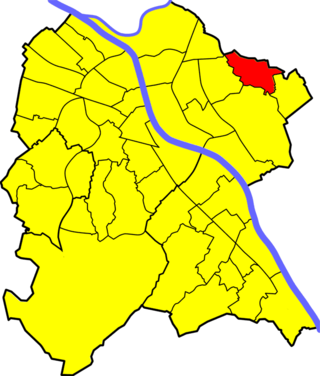
Holzlar Is an enclosed settlement in Bonn's district Beuel, east of the Rhine and north of the Siebengebirge in Germany. Holzlar has a population of about 11,000 and consists out of the former villages Holzlar, Kohlkaul, Heidebergen, Roleber and Gielgen.
70. Schloss Rigal
Rigal Castle is a palais-like villa in the centre of Bad Godesberg, a district of Bonn, built in 1849. It is located on Kurfürstenallee opposite the so-called "Rigal'sche Wiese". From 1982 to 1984, Rigal Castle was included in the newly built building complex of the Chinese Embassy and was the residence of the Chinese Ambassador until 1999; it is still used by the People's Republic of China today.
71. Villa Finkler
The building Tempelstraße 10 is a villa in the Bonn district of Gronau, which was built in 1900/01. It is located on Tempelstraße, which branches off from Adenauerallee (B 9) above the banks of the Rhine (Wilhelm-Spiritus-Ufer). The villa is a listed building.
72. Kleines Theater
The Kleines Theater is a venue for plays, boulevard comedies and musicals in Bad Godesberg, a district of Bonn. The current theatre building, built in 1922/23, is located in the spa gardens in the Alt-Godesberg district at the address Koblenzer Straße 78. It is a listed building.
73. Villa Eschbaum
The building Tempelstraße 8 is a villa in the Bonn district of Gronau, which was built in 1901/02. It is located on Tempelstraße, which branches off from Adenauerallee (B 9), near the banks of the Rhine (Wilhelm-Spiritus-Ufer) opposite the entrance to the property of the Federal Foreign Office. The villa is a listed building.
74. Akademisches Kunstmuseum - Antikensammlung der Universität Bonn
Akademisches Kunstmuseum is an art museum in Bonn, Germany. It is one of the oldest museums in Bonn and houses the antique collection of the University of Bonn with more than 2,700 plaster casts of antique statues and reliefs, and over 25,000 originals. It is located in a neoclassical building at the southern end of the Hofgarten, near the Electoral Palace. During the renovation of the historic building, the museum can currently be visited at Römerstraße 164 in 53117 Bonn.
75. zu den Sieben Schmerzen Mariens
The Chapel of the Seven Sorrows of Mary in Mehlem, a district of the Bonn district of Bad Godesberg, is a Catholic chapel from the 17th century. It is located in the Mehlemer Oberdorf on the corner of Bachemer and Meckenheimer Straße and is a listed building.
76. Villa Mönkemöller
The building at Mönkemöllerstraße 37 is a palais-like villa in the Bonn district of Dottendorf, which was built in 1904. It lies at the upper end of the district on the edge of the forest on the slopes of the Venusberg. The villa is a listed building.
77. Alte Evangelische Kirche
The Old Evangelical Church in Oberkassel, a district of the Bonn district of Beuel, was built from 1683 to 1685 and rebuilt after its destruction in 1689 to 1698. It is located in the centre of the village on the corner of Königswinterer Straße and Zipperstraße. The church building, including the surrounding grave slabs, is a listed building. Together with the Christuskirche in Königswinter and the Dollendorf community centre, it is one of the three preaching sites of the Oberkassel-Königswinter parish in the An Sieg and Rhein church district of the Evangelical Church in the Rhineland.
Wikipedia: Alte Evangelische Kirche (Oberkassel, Bonn) (DE), Website
78. Schlosskirche
The Electoral Palace in Bonn is the former residential palace of the Prince-Electors of Cologne. Since 1818, it has been the University of Bonn's main building in the city center, home to the University administration and the faculty of humanities and theology.
79. Botanischer Garten
The Botanische Gärten der Friedrich-Wilhelms-Universität Bonn, also known as the Botanischer Garten Bonn, is a botanical garden and arboretum maintained by the University of Bonn. It is located at Meckenheimer Allee 171, Bonn, North Rhine-Westphalia, Germany, and open except Saturdays in the warmer months; admission is free.
80. Bismarckturm Bad Godesberg
The Bismarck Tower in Bad Godesberg was built as the third Bismarck Tower on the territory of today's city of Bonn. The still existing Bismarck Column in the Rheinaue in Bonn-Gronau had already been completed in 1901, and the wooden Bismarck Tower on the Venusberg in Bonn-Kessenich had already been inaugurated in 1894; the wooden tower had to be demolished in 1912 and was not rebuilt later. The Godesberg Bismarck Tower is located on the Wacholderhöhe on Elisabethstraße in the district of Alt-Godesberg. The tower is a listed building, and was registered in 1988 with the remark that the building had been clearly influenced by the Art Nouveau architecture of Henry van de Velde.
81. Studentenbrunnen
The student fountain in Bonn was built in 1913 and is a symbol of historic student culture in the city. The fountain on the corner of Franziskanerstraße / An der Schloßkirche was placed under monument protection in 1988.
82. Burg Buschdorf
Buschdorf Castle is a former knight's seat in Buschdorf in the district of Bonn in North Rhine-Westphalia, Germany. The castle complex, which used to be surrounded by a moat, is a listed building. It is privately owned.
83. Mineralogisches Museum

The Mineralogical Museum of the University of Bonn is a natural history museum with a focus on minerals in Poppelsdorf Castle. It is affiliated with the Rheinische Friedrich-Wilhelms-Universität Bonn.
84. Karmel St. Joseph
The Carmel of St. Joseph in the Bonn district of Pützchen-Bechlinghoven is a former convent of the Discalced Carmelites. The convent building is currently part of a residential complex that was built as part of a community housing project. It is located at Karmeliterstraße 1 and has been a listed building since 1998.
85. St. Marien-Kirche
The church of St. Marien in Bad Godesberg, built in the early 1860s, is a church of the Catholic parish of St. Marien and St. Servatius. The church, located at Burgstrasse 43a, has a Gothic Pietà from the end of the 13th century from the estate of the artist Paul Kemp. It is a listed building.
86. Large Two Forms
Large Two Forms is a 1966-1969 sculpture by Henry Moore. The monumental sculpture measures 365 cm × 610 cm × 400 cm. It comprises two large curving elements that almost meet. The organic shapes, each with oval openings, resemble two human pelvis bones, positioned as if copulating. The work may have a distant relationship to his 1934 sculpture Two Forms in pynkado wood, now held by the Museum of Modern Art in New York.
87. Lukaskirche
The Lukaskirche of the Protestant Lukaskirche parish in the Bonn-Castell district of Bonn-Castell was built after the Second World War as a result of the influx of Protestant citizens. The city church at Kaiser-Karl-Ring 25 was placed under monument protection in 2007. The Lukaskirche parish belongs to the Bonn church district of the Evangelical Church in the Rhineland.
88. Schauspielhaus
The Schauspielhaus Bad Godesberg is the largest theatre in the city of Bonn and the first new theatre building in the Federal Republic of Germany in the post-war period. The building was constructed in the Bad Godesberg city centre in the early 1950s. It now belongs to the Alt-Godesberg district of Bonn and is located at Theaterplatz 9 / Am Michaelshof 9 ; it is under Denkmalschutz.
89. Rheinisches Malermuseum Bonn
The Rheinisches Malermuseum is an art museum in Bonn, Germany. The museum is owned by a private association and has exhibits on forgotten artistic techniques and tools of the painter. It was established in 1985.
90. Kuckstein
The Kuckstein is a mountain of the Ennert, which slopes off the Siebengebirge to the north. It lies east of the Bonn district of Oberkassel on the right bank of the Rhine and north of Römlinghoven, which belongs to Königswinter. Its height is 190 m above sea level.
91. Goldfuß-Museum
The Goldfuß Museum is a paleontological collection in Bonn and, together with the Mineralogical Museum, part of the Institute of Geosciences at the University of Bonn. It is named after the founder of the museum, paleontologist Georg August Goldfuß.
92. Baumschulwäldchen
The Baumschulwäldchen in Bonn's Weststadt district is a 1.4-hectare city park. Together with the Electoral Gardener's House located here, the park is a listed building as the site of the former electoral tree nursery.
93. Foveaux-Häuschen
The Foveaux-Häuschen is a historic lookout house in the wooded Ennert ridge of the Bonn district of Beuel on the right bank of the Rhine. It is located on the Foveauxweg about 150 m above sea level on the western plateau of the Ennert mountain, which belongs to the district of Küdinghoven. The Rhine is about 1600 meters away.
94. Ennert
The Ennert is the 152.0 m high northwesternmost elevation of the Ennert ridge of the same name, which slopes the Siebengebirge to the north, but is counted as part of the Pleiser Hügelland (292.5). It rises immediately east of the Bonn district of Küdinghoven in the district of Beuel.
95. Kurfürstliches „Wasserträgerhaus“
The electoral "Wasserträgerhaus" in the Bonn district of Poppelsdorf dates from 1750 and is the only surviving residential building from the baroque electoral era of Bonn in the district. The building is located at Clemens-August-Straße 13 and is a listed building.
96. St. Adelheidis-Kapelle
The chapel of St. Adelheidis is located on Adelheidisplatz in the Bonn district of Pützchen-Bechlinghoven. It is a pilgrimage chapel dedicated to Saint Adelheid of Vilich. The current chapel was built in 1769 at the Adelheidis fountain and is a listed building. The fountain or the spring enclosed in it has been a pilgrimage destination since the Middle Ages. The chapel building is a small, plastered, single-nave hall church with a low three-sided choir niche, a pressed barrel vault and a turret on the north-west side of the roof facing away from the street.
97. Kurfürstliches Gärtnerhaus
The Electoral Gardener's House is located in the Weststadt district of Bonn on the corner of Wittelsbacherring and Beethovenplatz. The historic building is located on the northeast side of a small park known as the tree nursery grove. The baroque building from the second half of the 18th century, together with the remains of the site of the former electoral tree nursery, is a listed building.
98. Heilig-Kreuz-Kirche
The Holy Cross Church is a Roman Catholic church in the Hochkreuz district of the Bonn district of Bad Godesberg. The church at Cheruskerstraße 11–15 is used by the Catholic parish of St. Andreas and Evergislus and thus belongs to the Archdiocese of Cologne.
99. Pranger
The Bonn Cathedral, also known as the Cathedral Basilica, is the main Catholic church in Bonn and a landmark of the city. It was built in the 11th century as the Romanesque collegiate church of St. Cassius and Florentius of the Cassius Monastery. After the secularization of the monastery at the beginning of the 19th century and the demolition of the neighboring parish church of St. Martin in 1812, the cathedral came into the possession of the parish of St. Martin. Since 1956, the cathedral has borne the title Basilica minor. The Bonn Cathedral has been undergoing general renovation since 2017, and the interior has been open again since October 31, 2021.
100. Rheinisches Landesmuseum
Das LVR-LandesMuseum Bonn ist eines der ältesten kulturhistorischen Museen Deutschlands. Die Sammlung des LVR-LandesMuseums bildet mit ihren archäologischen, kunst- und kulturhistorischen Objekten 400.000 Jahre Menschheitsgeschichte ab. Der Schwerpunkt liegt auf der kulturellen Geschichte des Rheinlandes, die unter anderem durch archäologische Funde, mittelalterliche Kunstwerke, Werke der Düsseldorfer Malerschule und zeitgenössische Positionen abgebildet wird.
Share
How likely are you to recommend us?
Disclaimer Please be aware of your surroundings and do not enter private property. We are not liable for any damages that occur during the tours.
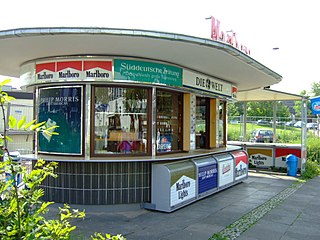

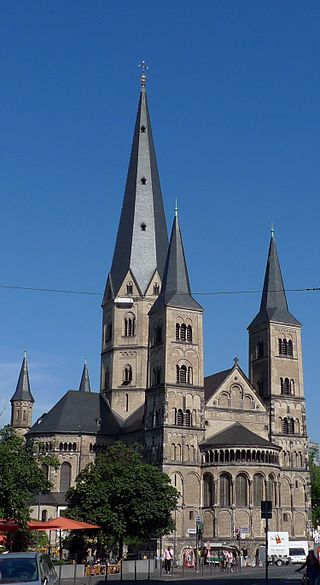
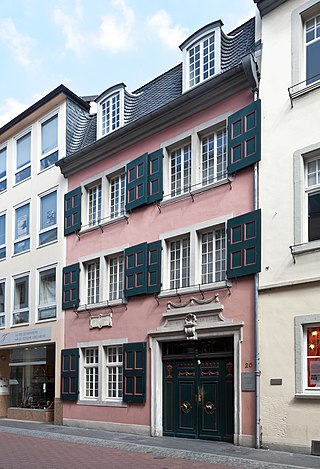
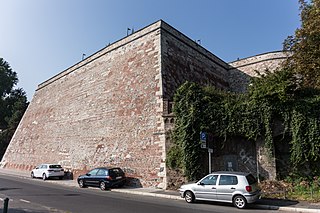
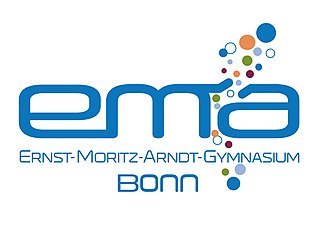

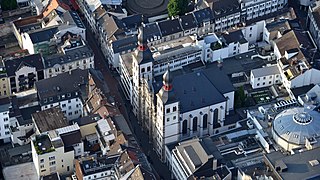
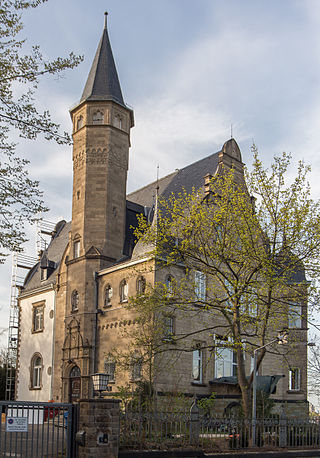
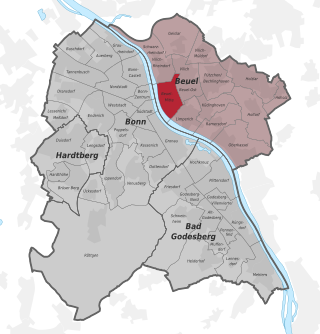
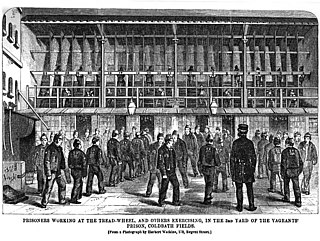

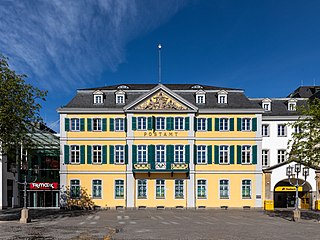
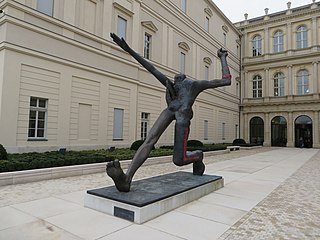
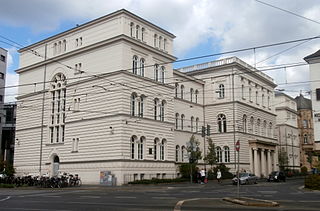
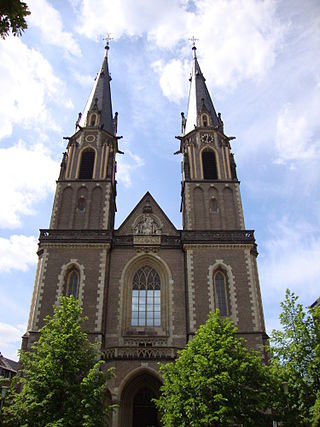

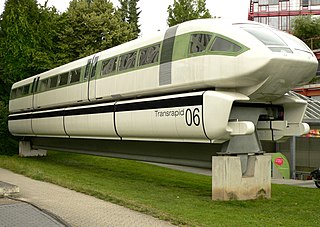

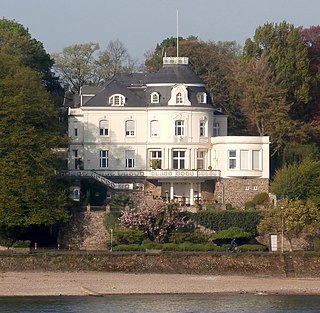


.jpg)
